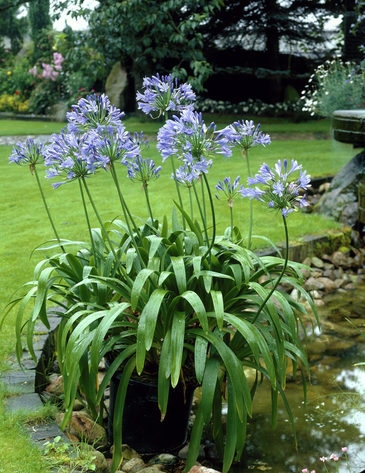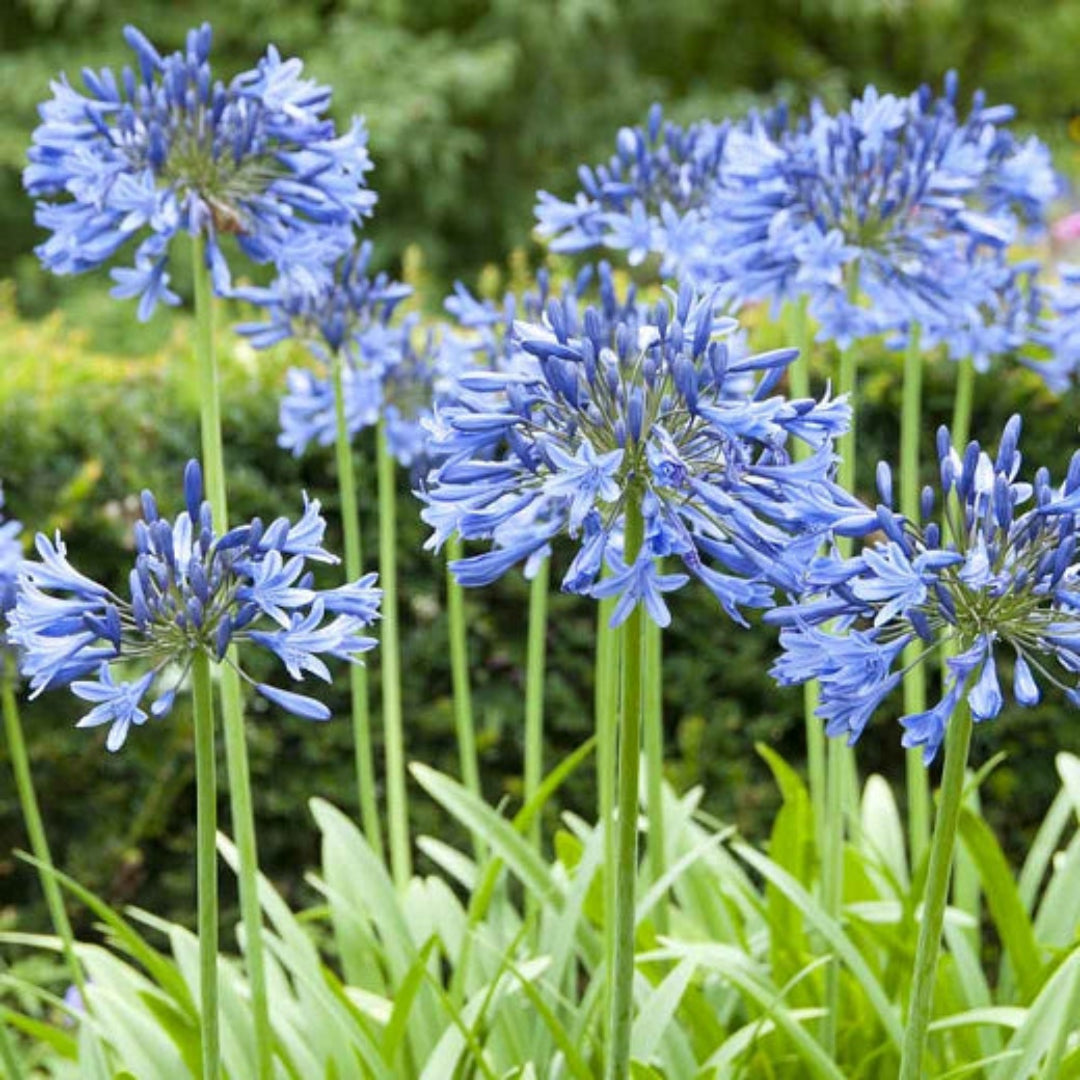Agapanthus Treatment Tips for Lush and Vibrant Flowers
Agapanthus Treatment Tips for Lush and Vibrant Flowers
Blog Article
Understanding the Art of Agapanthus Treatment: Important Actions for Healthy Development and Dynamic Flowers
In the realm of gardening, the farming of agapanthus stands as a fulfilling venture for those who seek to support these elegant blooming plants. From selecting the right variety to grasping trimming methods, the trip in the direction of growing thriving agapanthus plants is complex and holds the essential to opening the full potential of these agricultural gems.

Selecting the Right Agapanthus Variety

When picking the right Agapanthus variety for your yard, consider elements such as climate viability, flower color, and growth routine. Agapanthus, commonly called Lily of the Nile or African lily, is available in a variety of colors varying from shades of blue and purple to white. Select a bloom color that matches your existing yard palette to create an unified landscape. Furthermore, take into consideration the environment in your region to guarantee the Agapanthus variety you pick can grow in your particular conditions. Some ranges are a lot more tolerant of cold temperatures, while others prefer warmer climates. Recognizing the development habit of various Agapanthus ranges is important for proper placement within your garden. Some selections have a clumping development habit, suitable for boundaries or containers, while others have a more spreading nature, ideal for ground cover or mass plantings. By thoroughly examining these aspects, you can choose the ideal Agapanthus variety to boost the beauty of your yard.
Perfect Planting Problems
Thinking about the optimum ecological demands is necessary for effective Agapanthus cultivation. Agapanthus flourishes in well-draining dirt with a somewhat acidic to neutral pH degree. When growing, choose a location that gets full sunshine to partial color. In hotter climates, giving some afternoon shade can protect against scorching of the leaves. Agapanthus plants are delicate to cool temperatures and ought to be protected from frost throughout wintertime months.
To guarantee healthy and balanced development and vibrant blossoms, plant Agapanthus light bulbs at a depth of regarding 2-4 inches and space them 8-12 inches apart. Adding raw material, such as garden compost, to the dirt can improve water drainage and fertility, promoting durable root development. Mulching around the base of the plants assists preserve dampness and reduces weed development. Routine watering is essential, particularly during the growing season, to maintain the dirt consistently moist however not waterlogged.
Watering and Feeding Tips
Keeping proper moisture levels and supplying vital nutrients are crucial aspects in the treatment routine for Agapanthus plants. It is essential to strike a balance when it comes to sprinkling Agapanthus. If overwatered, these plants prefer consistently wet soil but are prone to root rot. During the expanding period, water deeply once a week, making certain the dirt is well-draining to avoid waterlogging. In hotter climates or throughout periods of drought, more regular watering may be needed to keep the dirt equally damp. Nonetheless, lower watering in the winter months to avoid waterlogged problems.
Fertilizing Agapanthus is important for promoting healthy and balanced development and prolific blossoms. Use a well balanced plant food, such as a 10-10-10 formula, in the early springtime as new growth emerges. Repeat this application every 6-8 weeks throughout the expanding season. Stay clear of extreme fertilizing, as it can lead to lavish vegetation at the cost of flowers. Constantly adhere to the supplier's directions for correct dilution and application methods. By adhering to these watering and feeding ideas, you can ensure your Agapanthus plants prosper and produce dynamic, durable flowers.
Trimming Strategies for Agapanthus
Trimming Agapanthus plants at the appropriate times and with proper strategies is crucial for preserving their health and wellness and advertising ideal growth and blooming. The optimal time to prune Agapanthus remains in late winter season or very early spring prior to new development emerges. Begin by getting rid of any dead or yellowing fallen leaves near the base of the plant. Cut them as short as possible without harming the arising shoots.
Deadheading invested flowers can likewise reroute the plant's energy into generating more blossoms rather than establishing seeds. If you desire to collect seeds for proliferation, leave some flowers to completely dry and mature on the plant.
Keep in mind to use tidy, sharp devices to make specific cuts and minimize the threat of introducing diseases. Agapanthus. Routine pruning will help keep your Agapanthus looking neat and healthy and balanced while making sure a bountiful display of stunning flowers
Taking Care Of Typical Pests and Conditions
After Get the facts ensuring correct trimming methods for Agapanthus, it is necessary to address typical bugs and conditions that can influence the health and vitality of these plants. Agapanthus plants are normally hardy but can still succumb particular issues. One usual bug that influences Agapanthus is the Agapanthus gall midget. This tiny, orange fly lays its eggs in the vegetation, bring about distorted development and flower buds that fail to open. To combat this pest, trim and ruin any afflicted plant components and think about making use of insecticidal soap.
Another typical problem is fungal fallen leave spot, which provides as dark lesions on the fallen leaves. To stop fungal diseases, ensure good air flow around the plants, prevent look at here now overhead watering, and eliminate any type of contaminated fallen leaves quickly. In addition, Agapanthus plants can experience origin rot if they are planted in badly draining soil. To prevent this, plant Agapanthus in well-draining dirt and prevent overwatering. By being attentive and taking timely activity against conditions and pests, you can aid your Agapanthus plants thrive and produce vibrant blooms.

Final Thought
To conclude, mastering the art of agapanthus care entails selecting the appropriate range, giving excellent growing problems, proper watering and feeding, appropriate pruning techniques, and resolving usual insects and illness. By adhering to these essential actions, you can guarantee healthy development and dynamic flowers for your agapanthus plants. Keep in mind to on a regular basis keep track of and preserve your plants to advertise their overall health and longevity.
To guarantee healthy growth and vivid blooms, plant Agapanthus bulbs at a deepness of regarding 2-4 inches and room them 8-12 inches apart. By following websites these watering and fertilizing tips, you can ensure your Agapanthus plants flourish and create dynamic, lasting flowers.
One common insect that influences Agapanthus is the Agapanthus gall midge. Furthermore, Agapanthus plants can endure from root rot if they are grown in improperly draining pipes dirt. By following these important actions, you can guarantee healthy and balanced growth and vibrant blossoms for your agapanthus plants.
Report this page